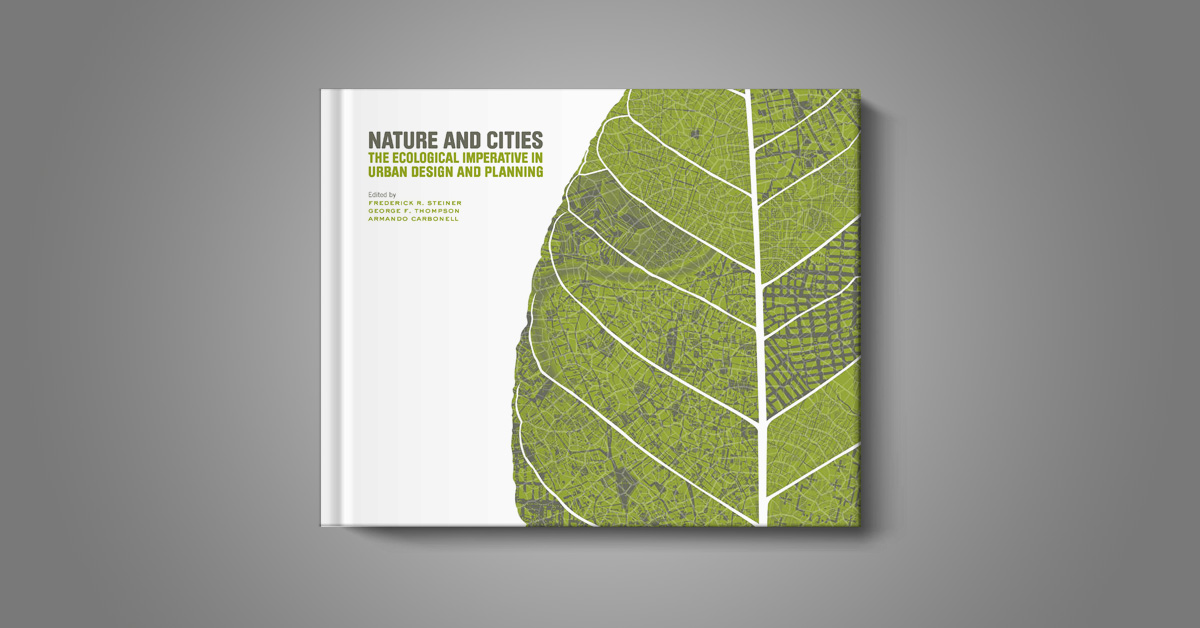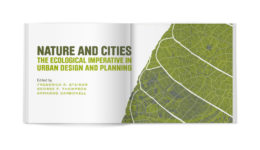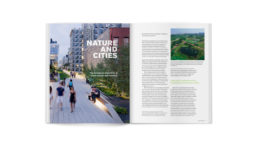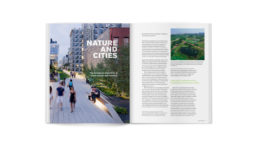 Nature and Cities
Nature and Cities
“Landscapes do not lie; they are the embodiment of all that we do on Earth,” the editors ofNature and Citieswrite in their introduction. Faced with seemingly limitless urbanization, they challenge planners and designers to think creatively about sustaining nature and building communities.
This volume — named a Best Book of 2016 by the American Society of Landscape Architecture — picks up where the editors’ 1997 book, Ecological Design and Planning, left off, catching up with the evolution of sustainable urban design. Renowned landscape architect James Corner, co-designer of New York City’s High Line park, focuses on the urban public ream. He expands the idea of “nature” to the broader “life in the city,” thus linking ecology with social and cultural life. Corner says that technological interventions should be joined with artistic and aesthetic intentions, resulting in “an ethos and practice that is at once rationally instrumental and enchantingly poetic.”
Chinese landscape architect Kongjian Yu, founder of Turenscape and designer of numerous innovative parks, looks to peasant farming traditions to discover “deep forms” such as terracing and irrigation systems, as inspiration for urban design. Yu reaffirms that “urban nature needs to be designed to integrate human activities and natural processes as a harmonious whole.” Yu also deals with water systems at the regional and national scales, as discussed by Charles Waldheim.
“The city is now everywhere, and the world is a hybridized… ecology of our own making,” asserts educator Richard Weller, who describes how today’s landscape urbanism builds upon and differs from the teachings of ecological planner Ian L. McHarg (1920–2001). To make today’s cities sustainable means not only reducing their ecological footprint, Weller says, but reinventing them: “it is a problem awaiting new design solutions ready to be cast in creative and desirable terms.”
Anne Whiston Spirin, whose 1984 book, The Granite Garden: Urban Nature and Human Design, helped propel the rise of ecological urbanism, finds “exemplary projects all over the world in virtually all climates and cultures,” but cautions that “knowledge is being lost” in the form of vernacular practices and traditional architectural responses to climate.
Iconic design can enhance public appreciation for gigantic investments in urban infrastructure. To prove her point, Kristina Hill points to the example of London’s Thames Barrier flood protection system, whose phalanx of towers are said to resemble helmeted Anglo-Saxon warriors. The topic of water and urban nature is addressed in an insightful manner by the celebrated landscape architect Laurie Olin, who reveals “the twin poles of water design,” environmental mechanics and poetic effect. Ideally, he points out, the need for the former can become an opportunity for the latter.
In a challenging essay on urban resilience, Nina-Marie E. Lister notes that official rhetoric often outpaces design innovation when it comes to coping with ecological change and risk. “What does a resilient world look like, how does it behave, and how do we plan and design for resilience?” she asks, then proceeds to lay out an evidence-based approach to “adaptive and ecologically responsive design in the face of complexity, uncertainty, and vulnerability.”
While the 16 essays in the book address several interrelated fields of design, the editors want to impress a personal sense of responsibility upon the reader: “Your family, neighborhood, village, city, region, and country are depending on you.”
Nature and Cities: The Ecological Imperative in Urban Design and Planning. Edited by Frederick R. Steiner, George F. Thompson, and Armando Carbonell. Cambridge, Mass.: Lincoln Institute of Land Policy, 2016.















